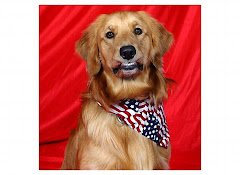10 Ways to Help Your Dog Get Used to a New Home
 I received the following article from my friends at Movers and Packers, and I thought I would share it with my readers. A lot of good, helpful tips here.
I received the following article from my friends at Movers and Packers, and I thought I would share it with my readers. A lot of good, helpful tips here.
10 Ways to help your dog get used to a new home
Moving from your home to a new residence can be a tense and stressful time, for your dog as well as for you. Here are a few useful tips to help both you and your dog have a low-stress move, and to help your dog accept and adapt to the new home.
Prepare your pet for the move.
- In preparing for a move to a new home, leash-train your dog well ahead of time, so that you can keep control of the dog during the move, and while familiarizing the pup with your new home.
- Another important step is to be sure that your dog is crate-trained. A crate gives your dog a home-within-a-home, a safe and comfortable place to be when the dog is confused or fearful, both during the move and once in the new home.
- Just before loading your pet for the move, be sure that all of the dog’s immediate needs are met; that he or she has been played with, fed and watered, and allowed to urinate and/or defecate.
- Examine the home, from both human and dog’s eye level, to eliminate or secure any hazards to the dog, such as chemicals, poisonous plants, or tempting electrical cords. Also, see that there are no irreplaceable valuables within reach, that your dog may damage or destroy, or worse, that may be a choking hazard.
- Immediately on moving, you should set up the dog’s crate, some favorite toys or possessions, and the dog’s own food and water dishes, in order to give your dog a sense of the familiar, as soon as she or he arrives.
- Be sure that all doors and windows, and outdoor fences and gates, are secured against your dog’s possible escape, before allowing the dog to roam and explore.
- Before the move, it’s a good idea to choose a veterinarian that you feel comfortable with in your new locale. Trying to find and choose a vet in an emergency that happens during or immediately after a move can waste precious time that your dog’s health and well-being may not be able to afford.
During the move, and once you’ve moved.
- It is usually best to make the actual move with your dog in its crate, or otherwise secured safely and not allowed to roam free in the moving vehicle, just as you would with a child. Be sure that your dog is on a leash before exiting the vehicle, and immediately begin familiarizing the dog with the area outside your new home. Walk the perimeter of the yard, allowing your pup to sniff and explore while secured at your side. If there is a particular place that you want to designate for urination and defecation, take the dog first to that area and offer praise and perhaps a small treat as soon as either has been done.
- If the new yard is secure, this would be a good time to play with your dog, and associate the new location with fun and connection with you. This would also be a good time to introduce a new toy and offer another tasty treat or two.
- After potty and play time, re-leash and bring your pup into the new house and to the area where the crate, food, water dish, and familiar toys have been located, before you continue to explore the rest of the new house with your dog. After you allow the dog to explore and become familiar with the new house, a meal and some time to relax together is appropriate.
These steps will help make the move easier for your dog to settle in and understand that this is now home. Remember though, that your dog will take cues from you and your family. If you are relaxed and cheerful about it all, your dog will be relaxed and accepting of it all, as well.
This site has lots of other great articles on moving and packing. Check out their blog.












































No comments:
Post a Comment